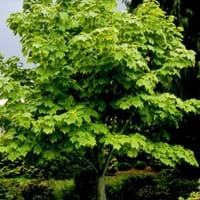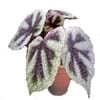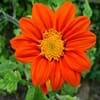Life Span
Perennial
Perennial
Type
Herbaceous Perennial
Tree
Origin
Chile, Southeast Asia
Northeastern United States, Mid-Atlantic United States, Southeastern United States, Canada
Types
Not Available
Not Available
Habitat
Mountain forests, subtropical regions, Terrestrial
moist forests, Slopes
USDA Hardiness Zone
11-12
3-7
Sunset Zone
H1, H2, 24
Not Available
Habit
Clump-Forming
Upright/Erect
Flower Color
Dark Blue
Yellow, Yellow green
Flower Color Modifier
Bicolor
Bicolor
Fruit Color
Tan
Green, Brown
Leaf Color in Spring
Light Green
Light Green
Leaf Color in Summer
Light Green
Green
Leaf Color in Fall
Light Green
Yellow
Leaf Color in Winter
Light Green
Not Available
Leaf Shape
Ovate
Maple shaped
Plant Season
Fall, Spring, Summer
Not Available
Sunlight
Full Sun
Partial Sun, Partial shade
Type of Soil
Loam, Sand
Loam
The pH of Soil
Acidic, Alkaline, Neutral
Acidic, Neutral
Soil Drainage
Well drained
Well drained
Bloom Time
Early Summer, Late Spring
Early Spring, Spring
Tolerances
Drought
Not Available
Where to Plant?
Container, Ground, Pot
Ground
How to Plant?
Seedlings, Stem Cutting
Layering, Seedlings, Stem Cutting
Plant Maintenance
Medium
Medium
Watering Requirements
Keep ground moist, Keep the Soil well drained, Requires regular watering
Requires regular watering
In Summer
Lots of watering
Lots of watering
In Spring
Moderate
Moderate
In Winter
Average Water
Average Water
Soil pH
Acidic, Alkaline, Neutral
Acidic, Neutral
Soil Type
Loam, Sand
Loam
Soil Drainage Capacity
Well drained
Well drained
Sun Exposure
Full Sun
Partial Sun, Partial shade
Pruning
Remove damaged leaves, Remove dead branches, Remove dead leaves
Prune if you want to improve plant shape
Fertilizers
10-10-5, All-Purpose Liquid Fertilizer
All-Purpose Liquid Fertilizer
Pests and Diseases
Aphids, Mealy bugs, Red spider mite
Anthracnose, Bacterial leaf scorch, Bleeding canker, Decline, Fomes root rot, Ganoderma root rot, Laetiporus root rot, Leaf spot, Powdery mildew, Red blotch, Tar spot, Verticillium Wilt
Plant Tolerance
Drought
Drought
Flowers
Showy
Insignificant
Flower Petal Number
Single
Single
Foliage Texture
Fine
Coarse
Foliage Sheen
Matte
Matte
Attracts
Birds, Bugs, Insects, Not Available
Not Available
Allergy
Unknown
Asthma, Runny nose, Skin irritation
Aesthetic Uses
Bonsai, Borders, Landscape Designing, Mixed Border, Showy Purposes, Used for decorating walls, fences, gates, hedges, etc.
Showy Purposes
Beauty Benefits
Not Available
Not Available
Environmental Uses
Air purification
Air purification
Medicinal Uses
Not Available
Antirheumatic, Cold, Cough, Emetic, gonorrhoea, Kidney problems, Pectoral, Swelling, Vomiting
Part of Plant Used
Not Available
Leaves, Sap
Other Uses
Decoration Purposes, Showy Purposes, Used as Ornamental plant, Used for Landscaping
Used as Ornamental plant, Used as preservative
Used As Indoor Plant
Yes
No
Used As Outdoor Plant
Yes
Yes
Garden Design
Bonsai, Container, Hanging Basket, Landscape
Feature Plant
Botanical Name
Begonia masoniana
ACER pensylvanicum
Common Name
Angel's Wings, Butterfly Flower, Poor Man's Orchid
Moosewood, striped maple, moose maple
In Hindi
iron cross begonia
धारीदार मेपल
In German
Eisenkreuz Begonie
gestreifte Ahorn
In French
croix de fer bégonia
érable rayé
In Spanish
el hierro cruzado begonia
arce rayado
In Greek
σταυρό μπιγκόνια σιδήρου
ριγέ σφενδάμου
In Portuguese
begônia cruz de ferro
plátano listrada
In Polish
Iron Cross begonia
paski klonu
In Latin
ferrum crucem Begonia
alba acernis
Phylum
Tracheophyta
Magnoliophyta
Class
Magnoliopsida
Magnoliopsida
Order
Cucurbitales
Sapindales
Family
Begoniaceae
Aceraceae
Clade
Angiosperms, Eudicots, Rosids
Angiosperms, Eudicots, Rosids
Tribe
Not Available
Not Available
Subfamily
Not Available
Not Available
Number of Species
Not Available
Importance of Begonia masoniana and Moosewood Tree
Want to have the most appropriate plant for your garden? You might want to know the importance of Begonia masoniana and Moosewood Tree. Basically, these two plants vary in many aspects. Compare Begonia masoniana and Moosewood Tree as they differ in many characteristics such as their life, care, benefits, facts, etc. Every gardener must at least have the slightest clue about the plants he wants to plant in his garden. Compare their benefits, which differ in many ways like facts and uses. The medicinal use of Begonia masoniana is Not Available whereas of Moosewood Tree is Antirheumatic, Cold, Cough, Emetic, gonorrhoea, Kidney problems, Pectoral, Swelling and Vomiting. Begonia masoniana has beauty benefits as follows: Not Available while Moosewood Tree has beauty benefits as follows: Not Available.
Compare Facts of Begonia masoniana vs Moosewood Tree
How to choose the best garden plant for your garden depending upon its facts? Here garden plant comparison will help you to solve this query. Compare the facts of Begonia masoniana vs Moosewood Tree and know which one to choose. As garden plants have benefits and other uses, allergy is also a major drawback of plants for some people. Allergic reactions of Begonia masoniana are Unknown whereas of Moosewood Tree have Asthma, Runny nose and Skin irritation respectively. Having a fruit bearing plant in your garden can be a plus point of your garden. Begonia masoniana has no showy fruits and Moosewood Tree has no showy fruits. Also Begonia masoniana is not flowering and Moosewood Tree is not flowering . You can compare Begonia masoniana and Moosewood Tree facts and facts of other plants too.





